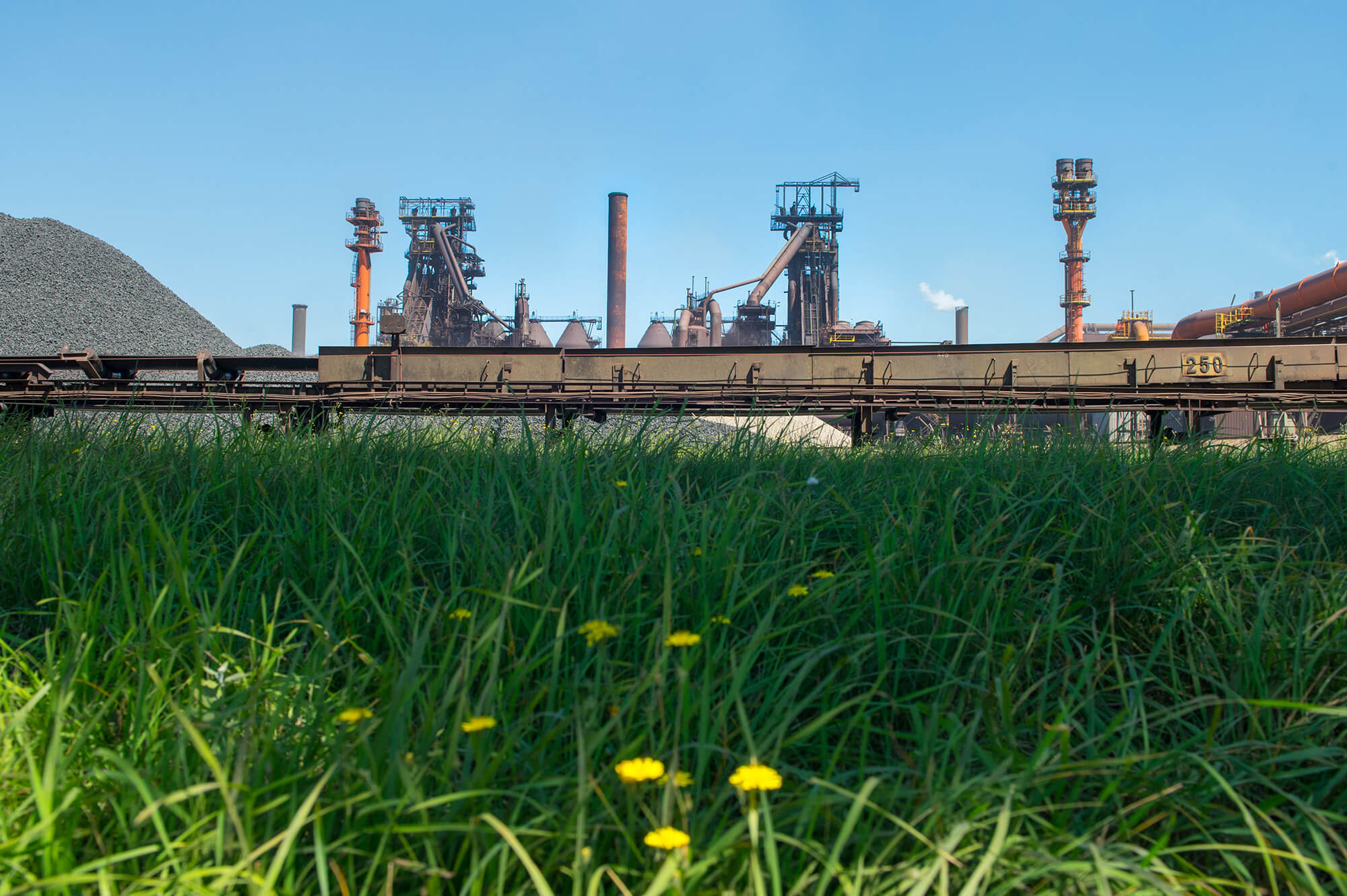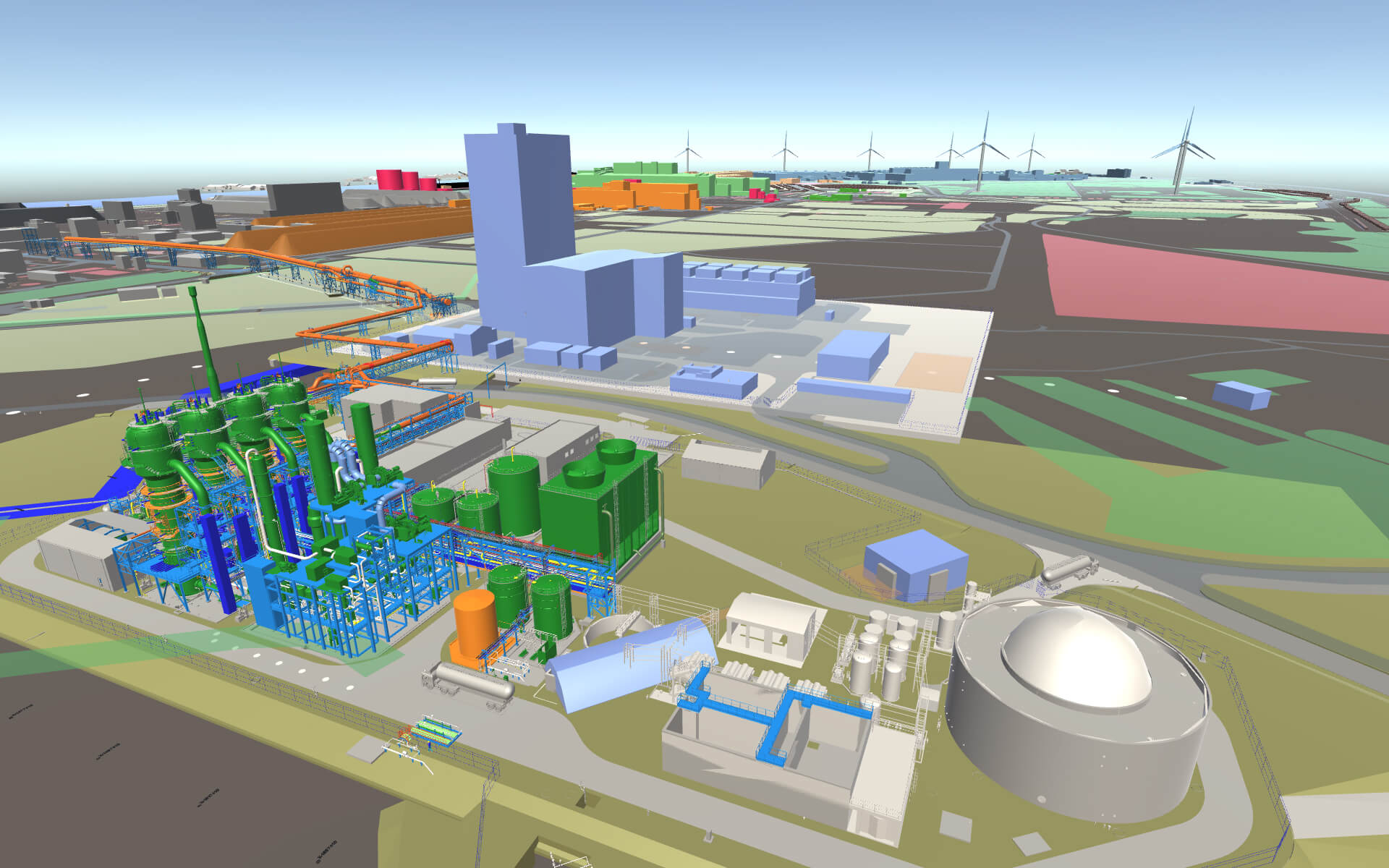More than ever, the climate is dominating the political, social and economic agenda. It is thus not a coincidence that ‘environment and energy’ forms our first strategic axle. We would like to share our three key messages.
Our three key messages

1 Steel is the most sustainable and environmentally friendly material for creating and maintaining prosperity.
Steel, the sustainable material par excellence
Steel has an unbeatable CO2 footprint. On average, on a worldwide level, 2.5 tons of CO2 are emitted per ton of steel based on iron ore. For aluminium, the CO2 footprint exceeds 8 tons and for plastic it exceeds 6 tons. ArcelorMittal Belgium scores significantly better than this average. Even more, with 1.7 tons, our CO2 footprint is one of the lowest in the world.
100% recyclable
We focus strongly on the re-use of steel. After all, steel is 100% recyclable, without any loss of quality. Every ton of steel produced today will sooner or later be recycled.
A welfare economy needs steel for, among other things, infrastructure, transport, and domestic appliances. Operating a mature economy requires approximately 10 to 13 tons of steel per person. At a global level, the average is currently only 4 tons. The continuously rising quantity of steel used around the world means that ever-increasing amounts of scrap iron are generated and used. It is therefore to be expected that in 50 years’ time, we will evolve into a market that solely recycles scrap metal.
Basic material for renewable energy
Steel is also the base material for sustainable energy. Examples are wind turbines, solar panels and various storage tanks. Furthermore, the steel industry supplies raw materials for complementary sectors such as cement and concrete. Viewed from a product life cycle, steel is therefore a particularly interesting material offering quite a few sustainable options.

2 ArcelorMittal Belgium is a world leader in the field of energy and CO2 efficiency.
Our ambition is to become number one for environmental and energy efficiency. We are particularly well-placed to realise this ambition since our site in Ghent is fully integrated with an optimal flow of material and logistics.
Every ton of steel we produce at ArcelorMittal Belgium is 20% more environmentally friendly than a ton of steel produced elsewhere in Europe, and 33% more environmentally friendly than a ton of steel produced in another location in the world.
In 2018, with the same global CO2 emissions, an additional 1.1 million tons of steel have already been produced than in 1990, which is 20% of our production volume of 2018. The objective is 41% of green tons by 2027.

3 We want to grow into the sustainable steel company of the future through new technologies and industrial symbiosis.
Recycling ca. 1 million ton of scrap
We are currently already recycling almost 1 million ton of scrap per year. In the future, we want to recycle quite a lot of other waste materials as well, such as wood, plastic and our own production gases.
Separating industrial gases
We differentiate two technologies for separating CO and CO2 in our industrial gases. The first technology is ‘Pressure Swing Adsorption’ (PSA), an already tried and tested technology where the gas pressure alternately rises and falls. However, we are also working, in collaboration with different partners, on a second innovative technology for separating CO and CO2 using amines. This project is called Carbon2Value.
Steelanol and Steel2Chem
We can convert the CO generated in different ways into valuable products. With our Steelanol installation, we will convert CO into bioethanol, an alternative for fossil fuels, e.g. in aeroplanes. However, we can also transform this bioethanol into other synthetics. We are already considering additional methods to convert CO into resources for plastics, by using very specific catalysts. For that purpose, we have started a pilot project called Steel2Chem, along with several partners and the chemical industry.
IGAR process
We have various options for processing CO2, released when separated from CO. By adding electrical energy and natural gas, we can transform CO2 into CO and hydrogen, and then use it in our blast furnaces. This IGAR process (Injection of Gas After Reforming) is being developed in ArcelorMittal Dunkirk. We can also store the CO2 via ‘Carbon Capture and Storage” (CCS) or transform it into proteins, raw materials for plastics or store it in cement or concrete using carbonatation.
Torero plant
Our Torero plant will process wood residue into biocoal suitable for injection into the blast furnaces. In this way, we will reduce the injection of fossil pulverised coal, cut our CO2 emission by 250,000 tons per year and provide a solution for a particularly difficult waste stream. Aside from wood, we also wish to recycle plastics at the end of their life cycle and thus help provide an answer to the ‘plastic soup’.
Renewal of blast furnace B
Although developing some of these technologies further will take more time, we are already taking a big step in the right direction with the renewal of our blast furnace B, thus preparing the furnace for a new set of waste materials being injected into it.